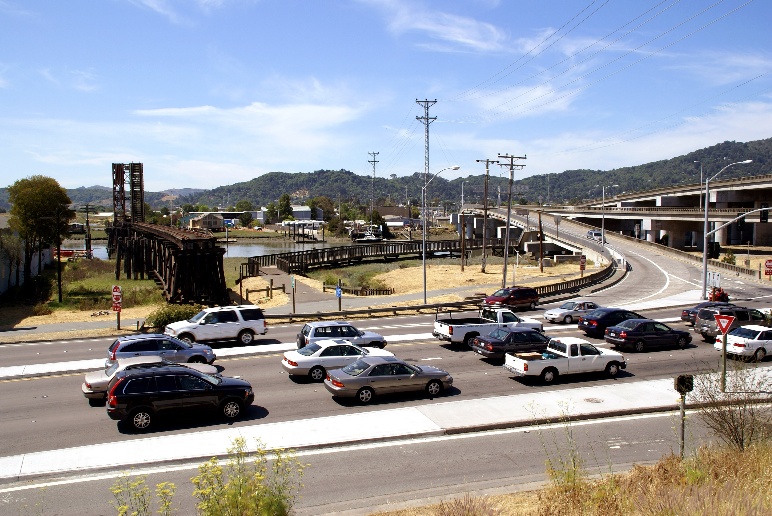| Marin Conservation League | 175 N. Redwood Dr., Ste. 135 | San Rafael CA 94903 | Tel 415.485.6257 | Fax 415.485.6259 Email Us. |
 |
Central Marin Ferry Connection
Multi-Use Pathway
The Transportation Authority of Marin (TAM) has been working on a plan to improve connections for non-motorized transportation (bicycle, pedestrian) between facilities in San Rafael, Larkspur and Corte Madera. Dubbed the “Central Marin Ferry Connector Multi-Use Pathway,” the project is planned to be implemented in phases. The Phase I pathway will extend from the southern end of Cal Park Tunnel, currently under renovation, passing a future SMART station, crossing over Sir Francis Drake Boulevard and down a U-shaped ramp to meet an existing pathway on the south side, and connecting with either the Larkspur Ferry Terminal or proceeding west under Hwy 101 on an existing pathway toward Greenbrae and Bon Air. Phase II, which is not yet funded, would cross Corte Madera Creek and connect by one of various possible routes to Wornum Drive and Sandra Marker pathway in Corte Madera. Eventually, the project will be integrated into extensive improvements to the Hwy 101-Sir Francis Drake Interchange.

TAM has completed an Initial Study/Mitigated Negative Declaration (IS/MND) covering Phase I only of the pathway project, and requested public comment. MCL has tracked the development of the project for several years and recognizes that it will address a real need. At the same time, we have criticized the use of a Negative Declaration rather than an Environmental Impact Report (EIR) to examine the project’s environmental impacts, especially because a large structural section of the project (the “ramp”) would encroach into tidal salt marsh, an endangered species habitat, in Corte Madera Creek. The IS/MND does not consider any alternatives that could avoid the marsh encroachment, nor does it consider the cumulative impacts of the eventual Phase II combined with Phase I of the project.
The mitigation measures in the IS/MND also are incomplete. Of the 28 measures proposed, 27 of them concern impacts to biological resources but they deal entirely with construction-related impacts (generic “best management practices”). The IS/NMD does identify indirect effects of the project: e.g.,”. . . increase in pedestrian and bicycle traffic in the salt marsh area, which would also likely result in an increase in the amount of trash and debris that may further degrade the quality of the habitat. Also direct shading from construction of the multi-use pathway would inhibit pickleweed growth, which would reduce salt marsh habitat.” These are potentially significant impacts, but no measures are offered to mitigate them.
MCL would like to see this project go forward with proper environmental analysis, and either an alternative structural design to avoid the marsh or improved mitigation measures to minimize human-related disturbance.
Refer to page 7 of the IS/MND for what the proposed design will look like.
2010 Documents and Correspondence
June 30, 2010, MCL letter to TAM




